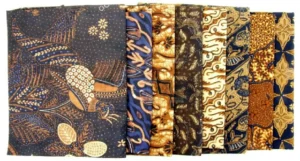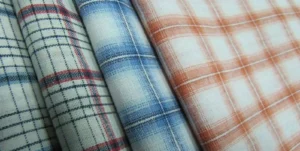The types of fabrics commonly used in traditional Southeast Asian clothing are rich and varied, and they are adapted to local conditions. They not only reflect the local natural resources and climate characteristics, but also reflect the cultural and craft traditions of various ethnic groups. The following are some of the fabrics commonly used in traditional clothing in Southeast Asian countries:
Silk
Features: light, soft, smooth, with natural luster, good breathability, suitable for tropical and subtropical climates.
Application: Silk is often used to make high-end traditional clothing, such as Chut Thai in Thailand, Áo Dài in Vietnam, Kebaya in Indonesia, etc. Silk clothing is usually used in formal occasions and festivals.
Cotton
Features: soft and comfortable, good moisture absorption, strong breathability, suitable for daily wear.
Application: Cotton is widely used in Southeast Asia to make various traditional clothing, such as Longyi in Myanmar, Baju Kurung in Malaysia, Barong Tagalog in the Philippines, etc. Cotton clothing is suitable for daily wear and light activities.
Batik
Batik is an Indonesian technique of wax-resist dyeing applied to the whole cloth. This technique originated from the island of Java, Indonesia.Batik is made either by drawing dots and lines of wax with a spouted tool called a canting, or by printing the wax with a copper stamp called a cap.(Excerpt from the website https://en.wikipedia.org/wiki/Batik)

Features: Made through batik technology, with colorful patterns, bright colors, and unique ethnic style.
Application: Batik is widely used in Indonesia, Malaysia and other places to make traditional clothing, such as Batik shirts and skirts in Indonesia, Batik Sarong in Malaysia, etc. Batik clothing is suitable for various occasions, from daily wear to formal events.
Abaca
Abacá , Musa textilis, is a species of banana endemic to the Philippines. The fiber is also exceptionally strong, stronger than hemp and naturally salt-resistant, making it ideal for making twines and ropes (especially for maritime shipping). (Excerpt from the website https://en.wikipedia.org/wiki/Abac%C3%A1)
Features: Made of abaca fiber, it is light, breathable, durable, and has a natural luster and texture.
Application: Abaca is often used to make Barong Tagalog in the Philippines. This fabric is suitable for hot climates and can embody solemnity and elegance. It is often used in formal occasions.
Velvet
Features: It has a soft and smooth texture, with a noble luster and feel, and good warmth retention.
Application: Velvet is used in Thailand, Vietnam and other places to make high-end traditional clothing, such as some styles in Chut Thai in Thailand and Áo Dài in Vietnam. Velvet clothing is usually used in autumn and winter or formal occasions.
Cotton and linen blended fabric
Features: It combines the advantages of cotton and linen, and is soft and comfortable, breathable, and tough.
Application: Cotton and linen blended fabrics are used in some Southeast Asian countries to make daily and traditional clothing, such as Longyi in Myanmar and Sampot in Cambodia, which are suitable for daily wear and light activities.

Gauze
Features: Light, breathable, soft, with a certain sense of transparency, suitable for tropical climates.
Application: Gauze is used in some Southeast Asian countries to make coats or decorations for women’s traditional clothing, such as Kebaya tops in Indonesia and Baju Kurung coats in Malaysia, which are suitable for daily and formal occasions.
Gold and silver thread fabrics
Features: Adding gold and silver threads to the fabric increases the sense of luxury and luster, which is suitable for festivals and formal occasions.
Application: Gold and silver thread fabrics are used in some Southeast Asian countries to make high-end traditional clothing, such as some styles in Chut Thai in Thailand and Áo Dài in Vietnam, which are suitable for weddings, festivals and formal events.
